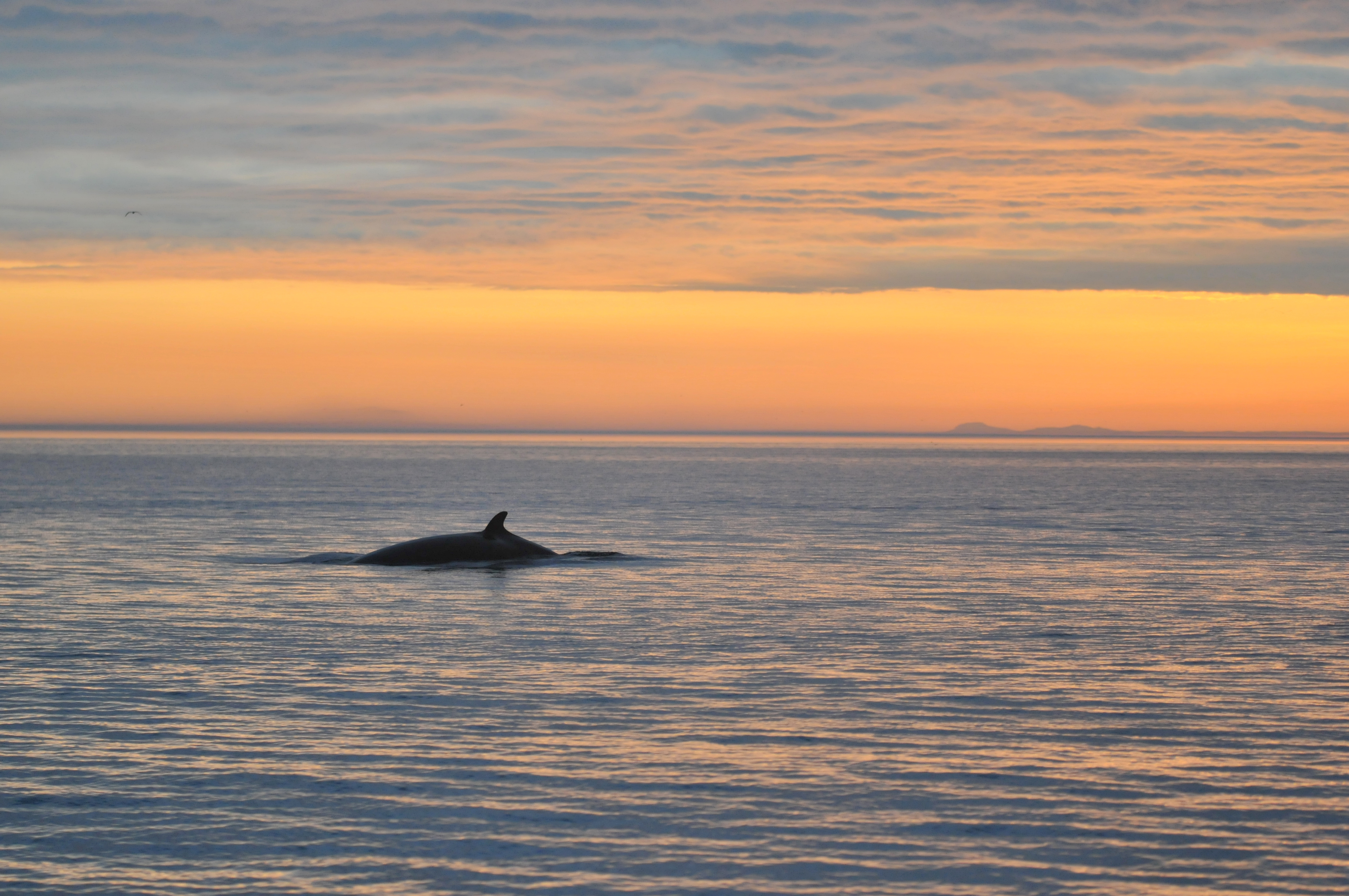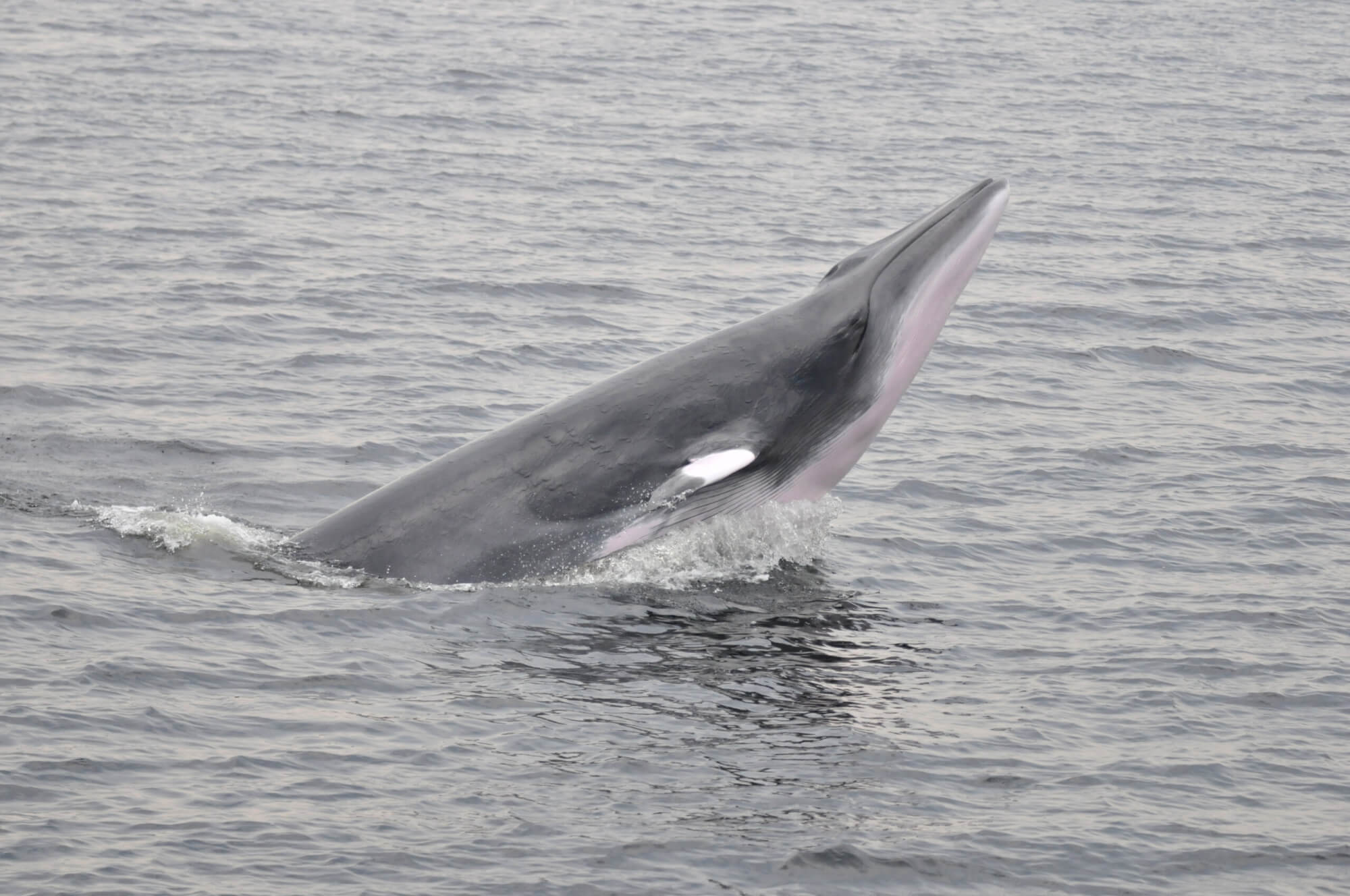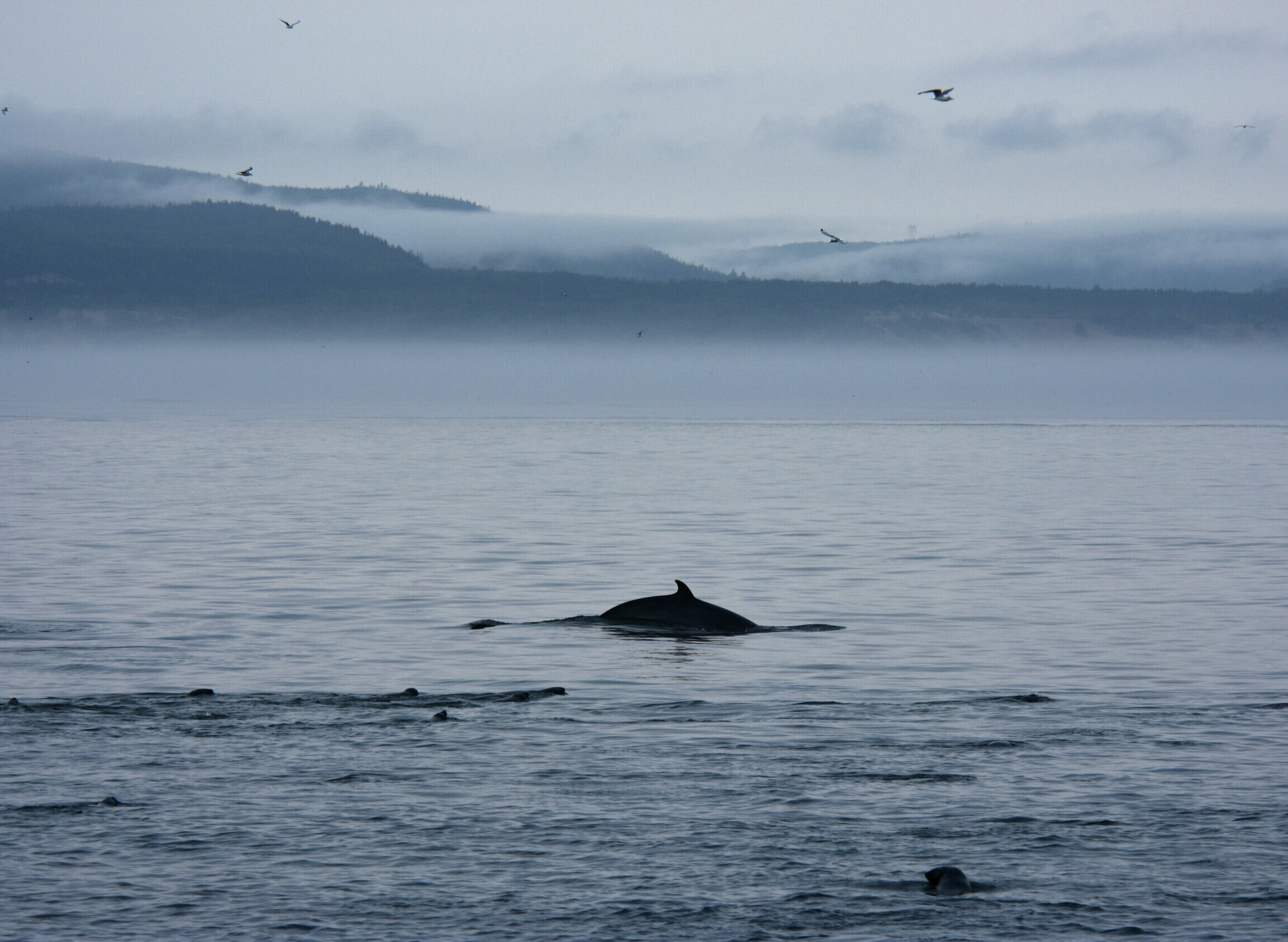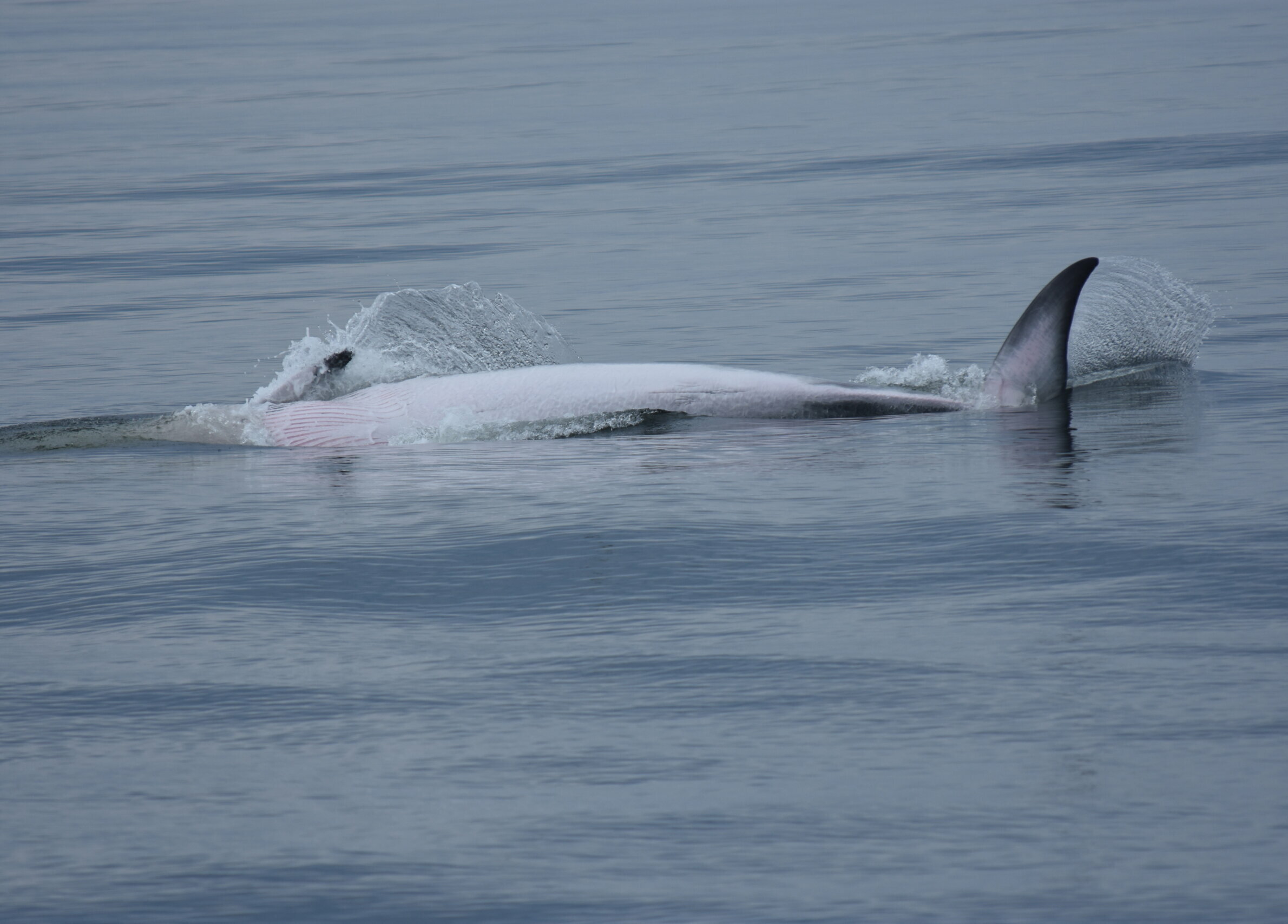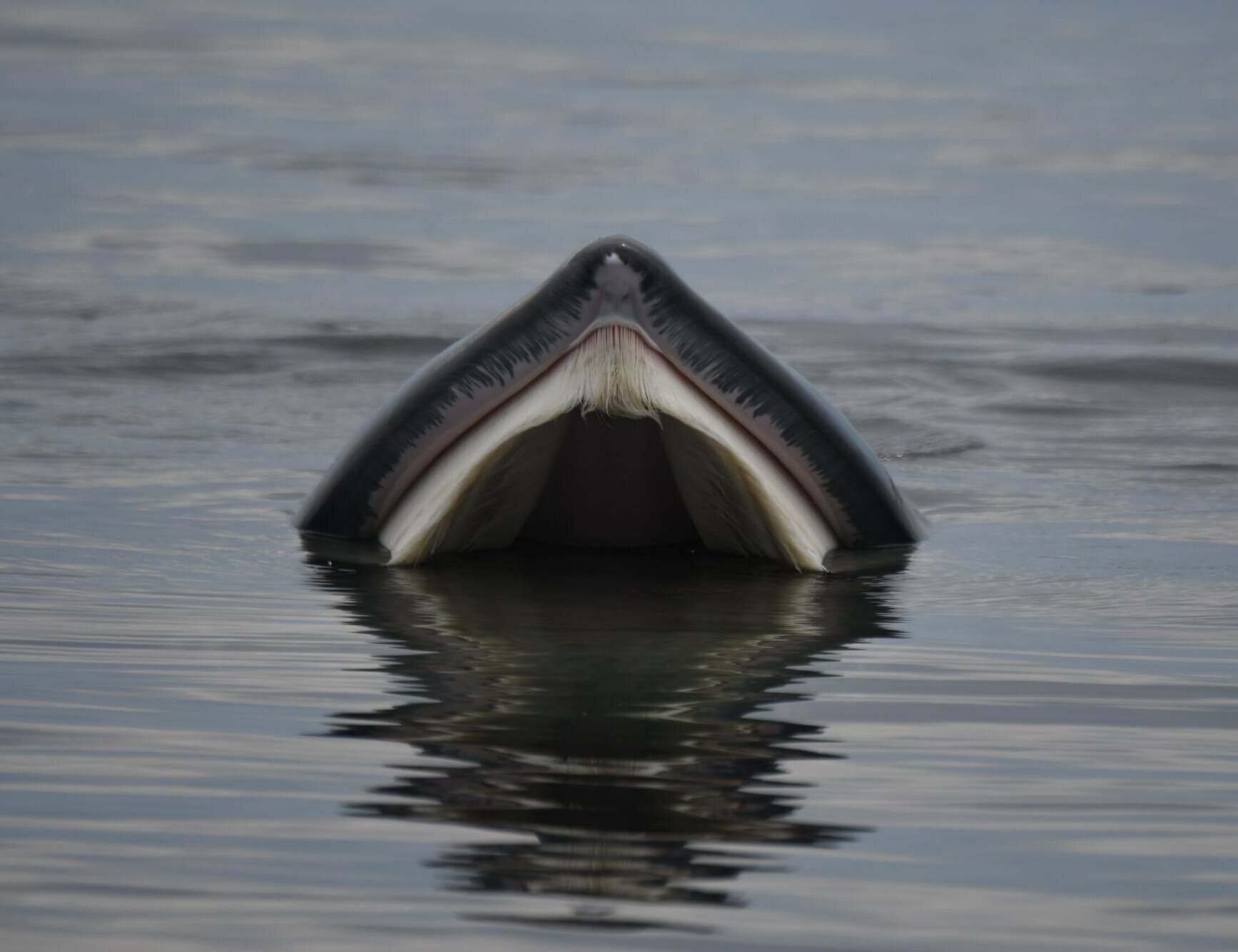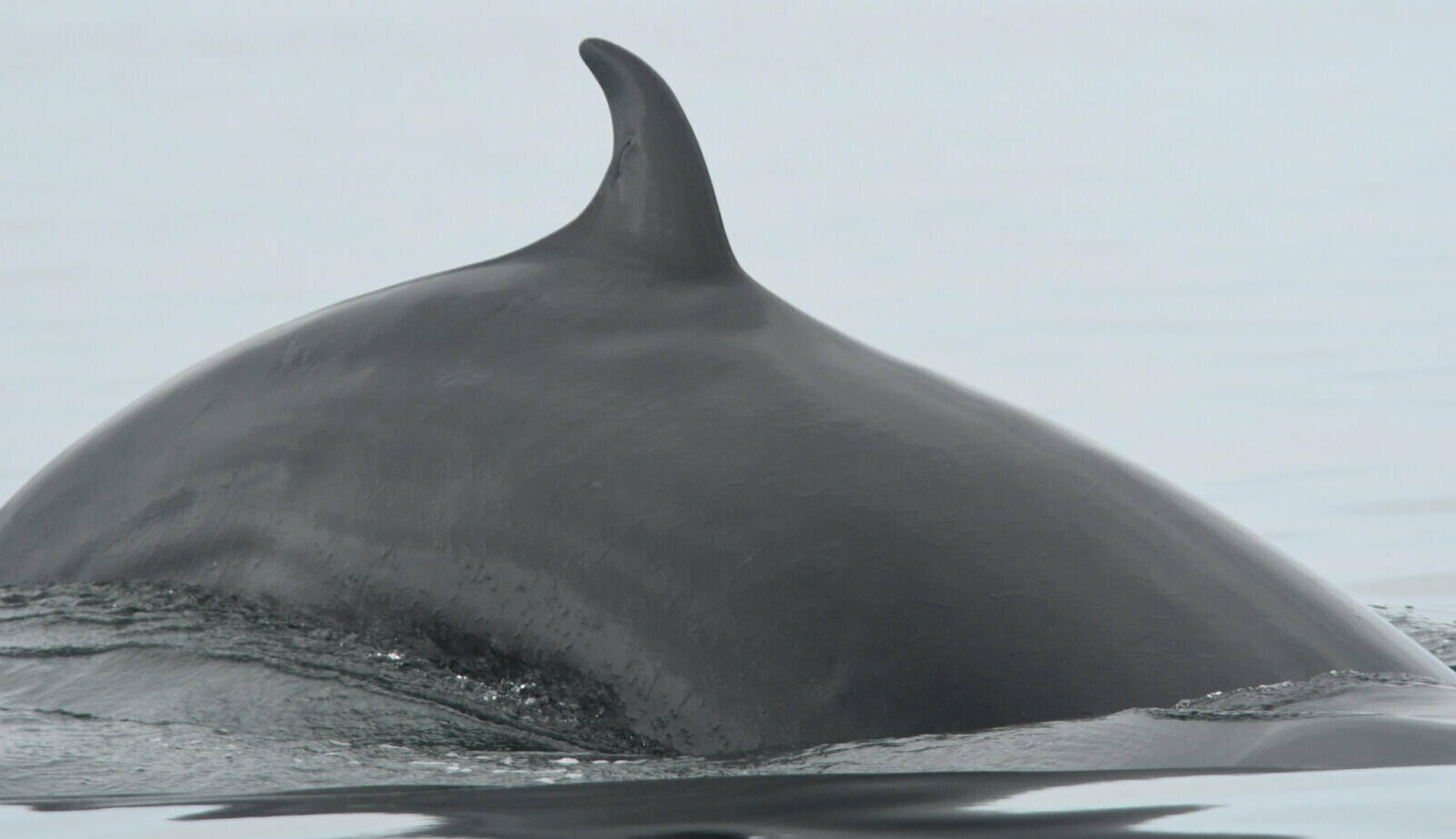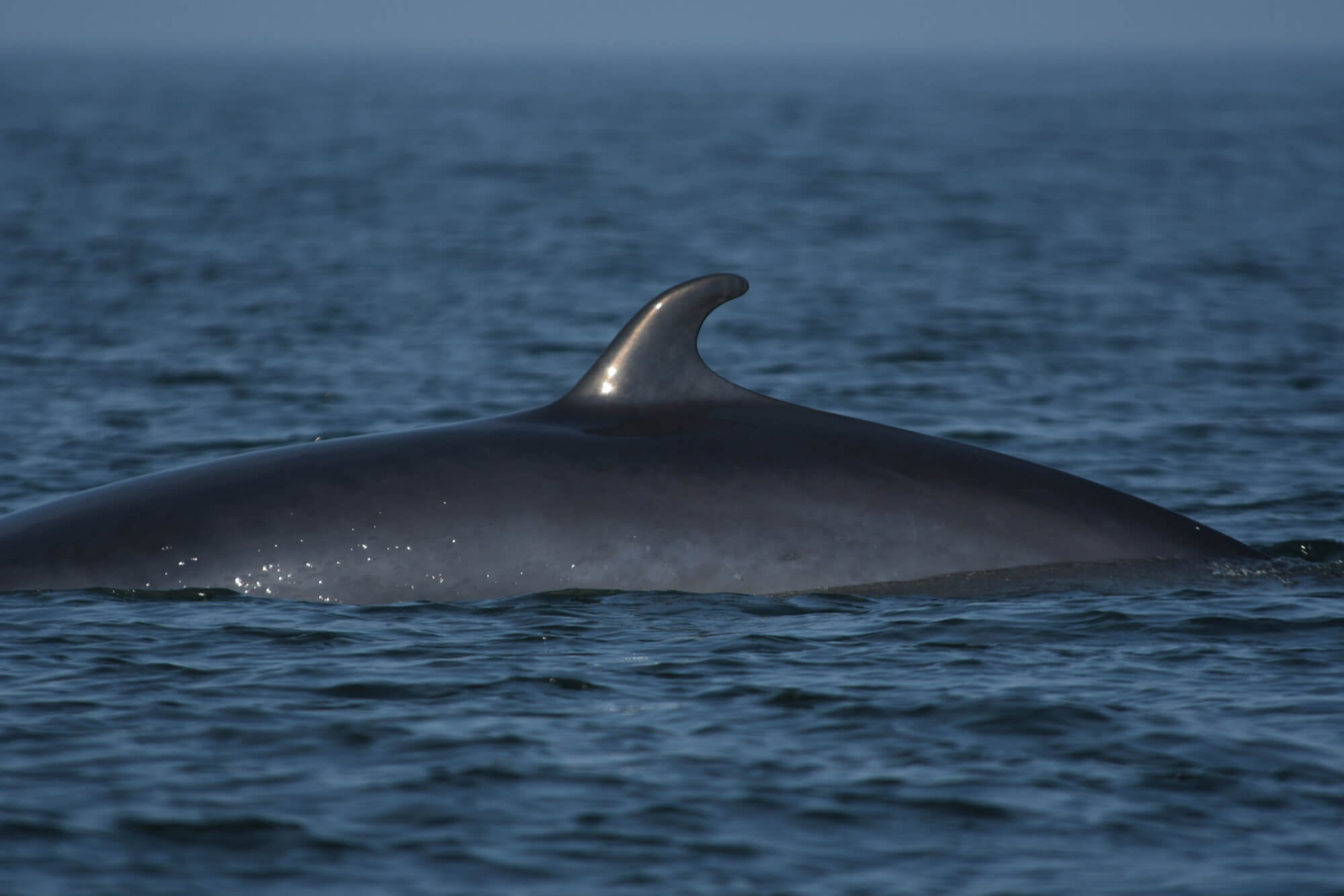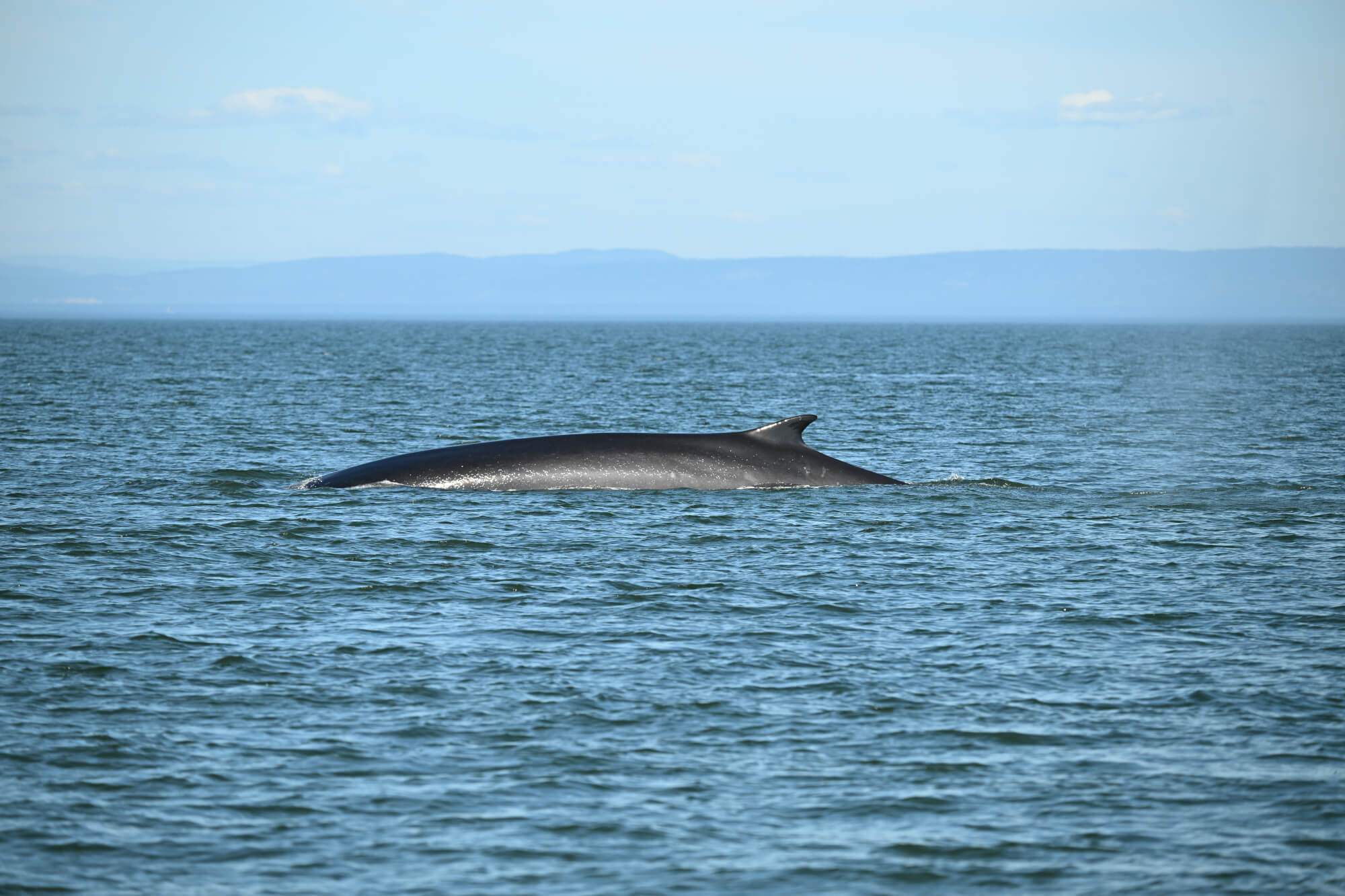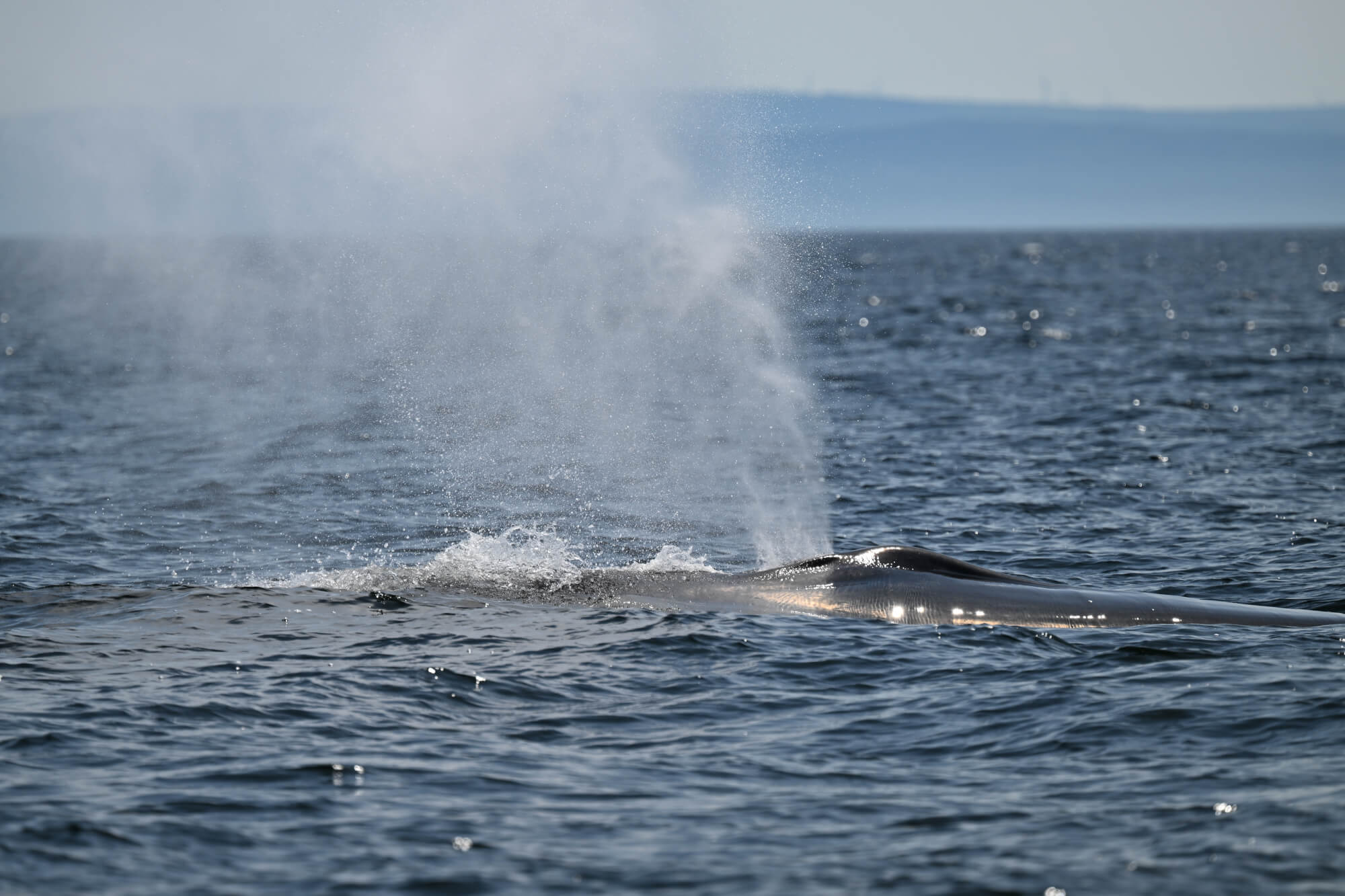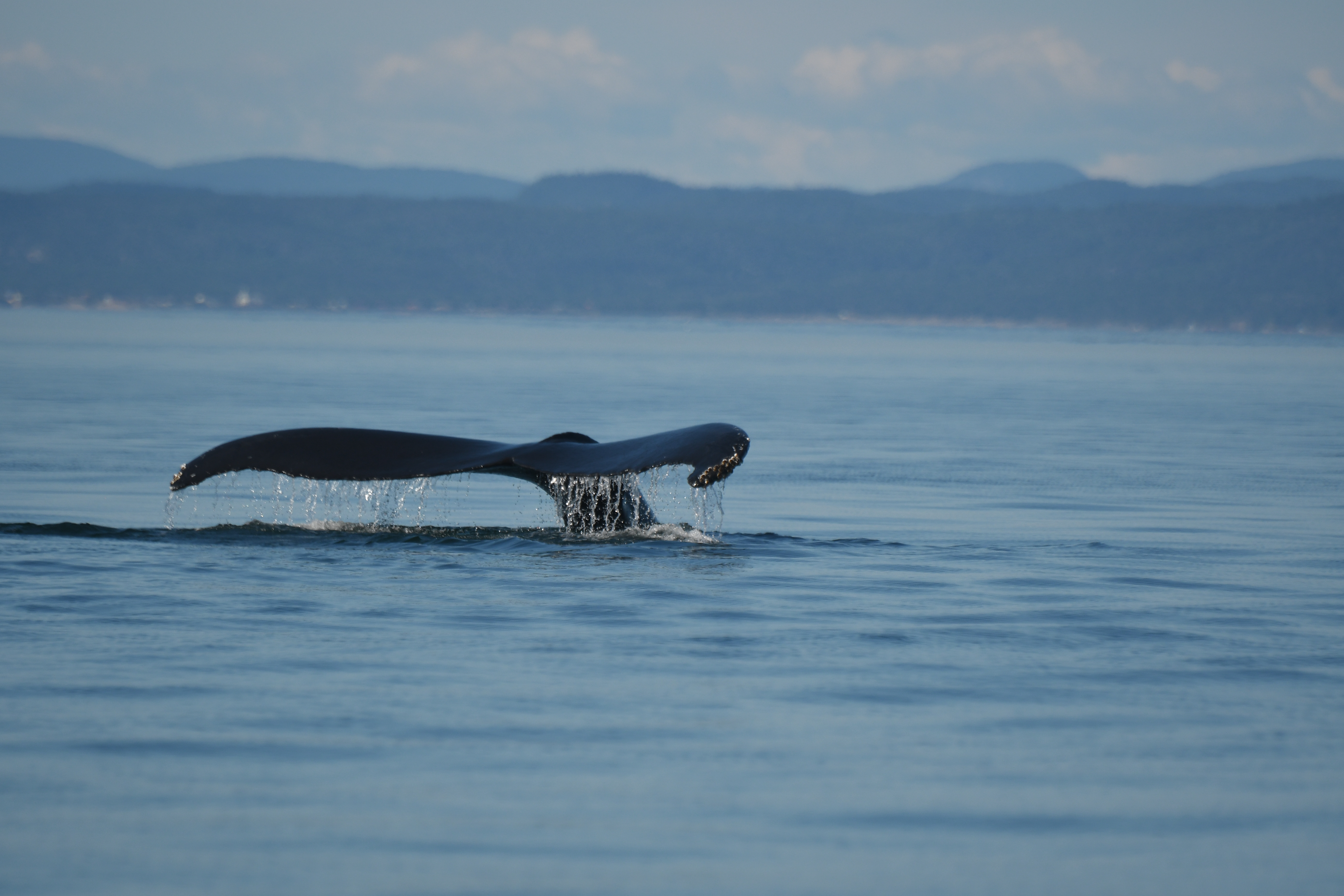The minke whale is an impressive cetacean that adapts well to changes in its environment by capitalizing on the prey that are most plentiful. A recent study indicates that this species may use the Gulf of St. Lawrence as a feeding ground before calving.
Study on minke whales in the St. Lawrence
In marine mammal research, the dynamic and lively minke whale often plays second fiddle. While minke whales are still harvested commercially elsewhere in the world, there is still a lack of studies and data on the species! This is the main reason why the size of the various populations and the impacts of environmental changes on the minke whale are still poorly understood.
Most recently, a study was conducted to better understand how this species is coping with the pressures it is experiencing in its ecosystem. Scientists analyzed changes in pregnancy rates and sexual segregation of minke whales in response to environmental changes in the Gulf of St. Lawrence Between 2007 and 2015, researchers gathered blubber samples, performed genetic analyses to quantify sex ratios, and established the endocrine profile (hormone balance) of the minke whales they studied, in addition to collecting environmental data.
Gulf dominated by females
The study confirmed that the minke whales that visit the St. Lawrence are overwhelmingly female . In fact, 162 of the 193 blubber samples collected (88.2%) between 2007 and 2015 were from females!
Furthermore, the rate of pregnant females was consistently higher than non-pregnant females in the Gulf of St. Lawrence, varying from 60% to 88.9% depending on the year with an average of 74.2% for the duration of the study period. In comparison, other whale species have much lower gestation rates. According to a study based on data from 2004 to 2018, 36.7% of the blue whales identified in the Gulf of St. Lawrence were pregnant females.
Where are the calves?
Another striking fact that emerged from this study: Of the approximately 200 minke whales that use the gulf each year, only one calf was observed by scientists, despite the fact that this territory is predominantly frequented by females! There is therefore a certain segregation between pregnant females in the gulf and non-pregnant females, males, immature individuals, and lactating females.
Any hypotheses for this segregation? Pregnant females may want to avoid predation or they may opt for this feeding area because their social and ecological needs are different due to their greater nutritional requirements. This reproductive and sexual spatial segregation means that the gulf is most likely used by females as a feeding area before they give birth.
Generalists well adapted to change
The Gulf of St. Lawrence is a favourite feeding ground for minke whales. However, its waters have undergone major upheavals due to overfishing and climate change. Rising water temperatures and the decline in large predatory fish like cod have altered the trophic web, a network of different food chains. These waters are now dominated by small fish such as herring and sand lance.Prey availability varied over the study period, with sand lance in particular undergoing significant changes in abundance.
Given that the minke whale’s diet consists largely of sand lance, as well as capelin and herring, one might expect that years of lower abundance would be followed by years with fewer pregnant females. Scientists have not established a concrete correlation between the likelihood of female minke whales becoming pregnant and the abundance or lack of prey the previous year!
A resilient little whale
Despite the pressures present in their environment, minke whales in the Gulf of St. Lawrence appear to be experiencing few significant impacts on their pregnancy rates. Unlike other cetaceans, the smallest of the great whales in the St. Lawrence exhibits resilience and behavioural plasticity (the species’ ability to adapt to its environment) that enable it to tolerate annual fluctuations in prey availability. As true generalists, minke whales are able to switch to other prey following changes in abundance to meet the energy requirements of gestation and lactation.
Minke whales in the spotlight
Nevertheless, the authors of this study point out the limitations of their research. Since no photo-identification was performed during the sampling, it is possible that some individuals may have been sampled more than once. Furthermore, the stability of this high reproductive rate does not mean that fetuses are always being carried to term. The number of calves must be tallied every year. In conclusion, scientists would be well advised to pay closer attention to this cetacean, which in the St. Lawrence is far too often overlooked!


